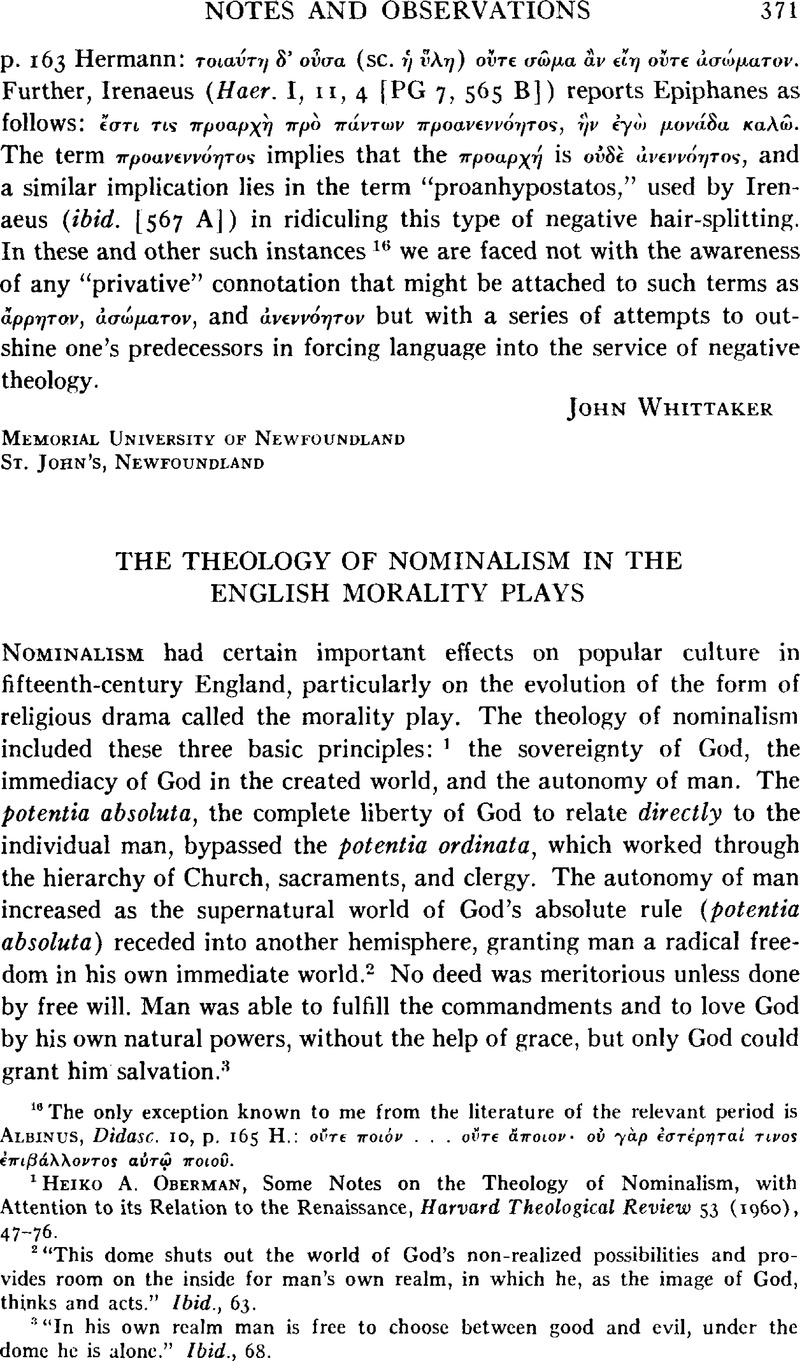No CrossRef data available.
Published online by Cambridge University Press: 10 June 2011

1 Oberman, Heiko A., Some Notes on the Theology of Nominalism, with Attention to its Relation to the Renaissance, Harvard Theological Review 53 (1960), 47–76CrossRefGoogle Scholar.
2 “This dome shuts out the world of God's non-realized possibilities and provides room on the inside for man's own realm, in which he, as the image of God, thinks and acts.” Ibid., 63.
3 “In his own realm man is free to choose between good and evil, under the dome he is alone.” Ibid., 68.
4 The Castle of Perseverance may be found in Furnivall, F. J. and Pollard, Alfred W. (eds.), The Macro Plays, Early English Text Society, Extra Series, No. 91 (London: Kegan Paul, 1904), 75–186Google Scholar.
5 Oberman, Heiko A., The Harvest of Medieval Theology: Gabriel Biel and Late Medieval Nominalism (Cambridge, Mass.: Harvard University Press, 1963), 269Google Scholar.
6 “And how dramatic it must have been for a spectator to watch these three hours of wrangling for the soul of man, with four open scaffolds belching forth vaunts and ill wishes of the Evils, and yet, in the East, one silent and apparently unmoved scaffold, that all this time seemed to take no part in the Destiny, but by its silent existence held attention and raised expectation.” Southern, Richard, The Medieval Theater in the Round (London: Faber & Faber, 1958), 112Google Scholar.